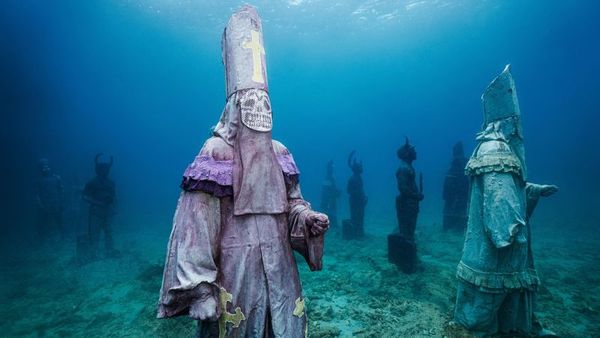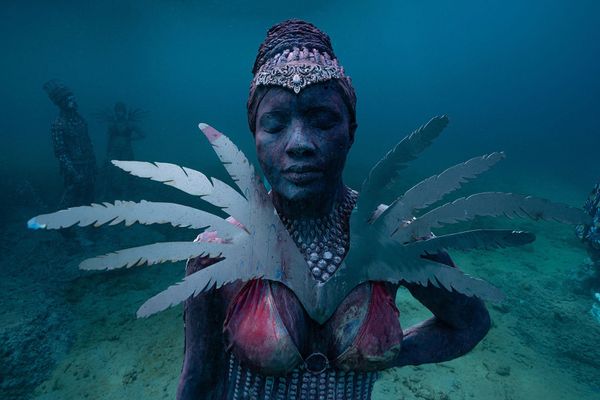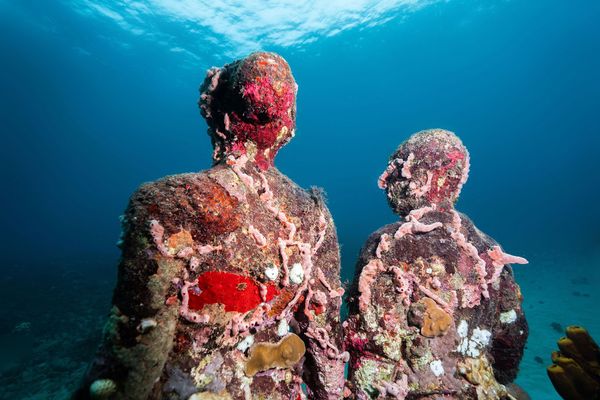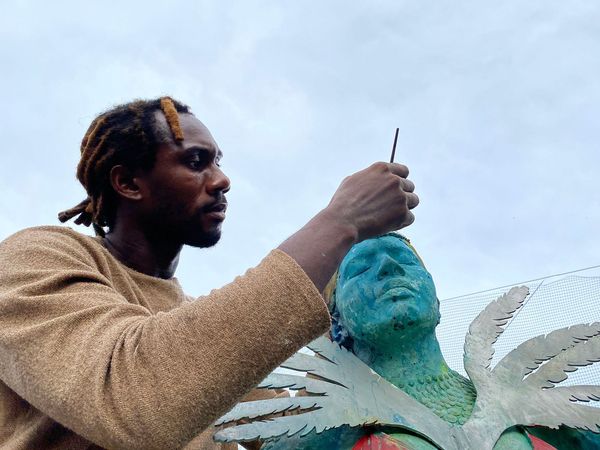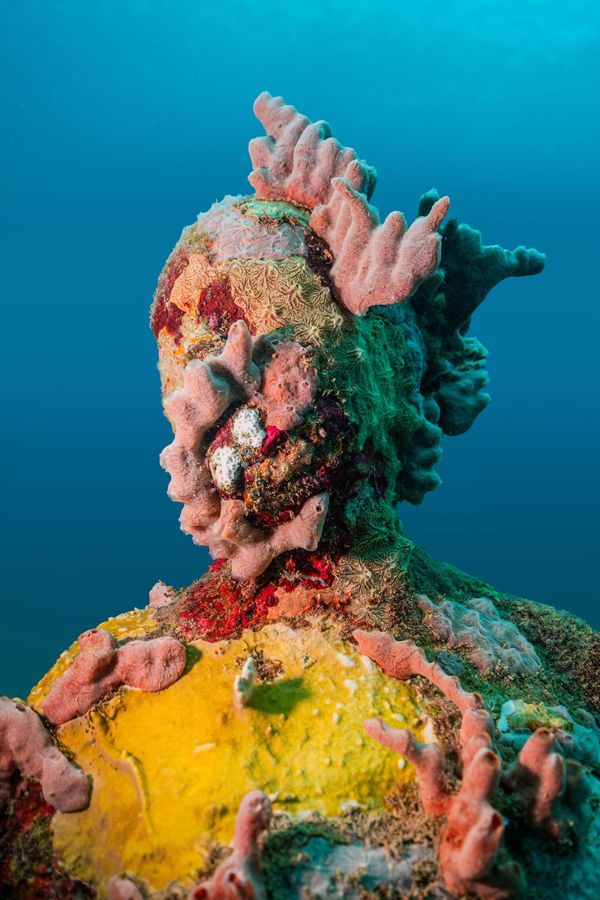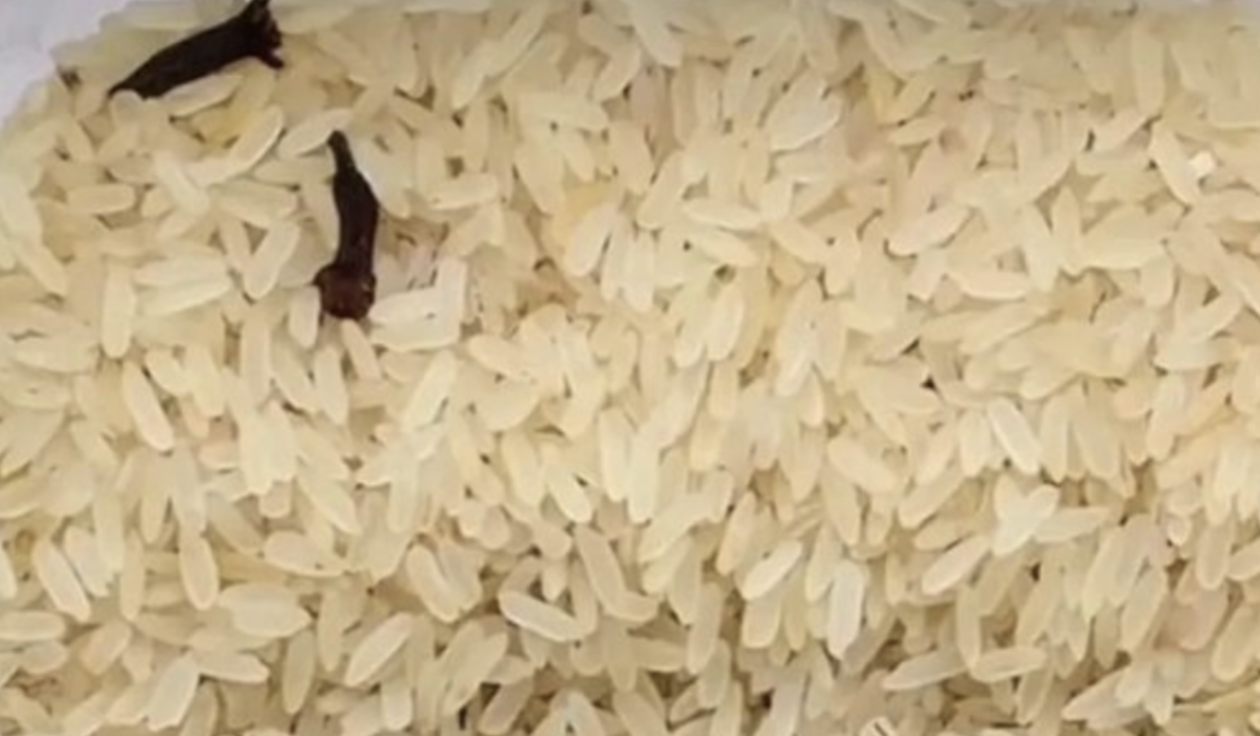The world’s first underwater sculpture park, the Molinere Bay Underwater Sculpture Park in Grenada, has recently undergone a major expansion. Thirty-one new captivating sculptures have been added to the park, making it one of the most popular underwater attractions in the Caribbean.
Commissioned by the Grenadian Ministry of Implementation and Tourism, the project aims to showcase Grenada’s rich culture and history. The new additions include a sculpture series called “Coral Carnival,” inspired by Grenada’s famous carnival, Spicemas. This series features iconic masqueraders such as the “Jab Jab,” a symbol of freedom for Grenadians.
The sculptures, made of high-grade stainless steel and pH-neutral marine cement, not only serve as works of art but also act as artificial coral reefs. With their purposeful design, including holes and shelters, they attract marine life such as octopuses and lobsters, creating a stunning underwater habitat.
Interestingly, marine life quickly adapted to the sculptures shortly after installation. An octopus and a family of crabs made their home in the sculptures’ bases, while a stingray was spotted near another sculpture. The unique silhouettes of these sculptures make them visually striking, even from a distance.
What sets this expansion apart is the introduction of color into the sculptures. Natural pigments were used to paint them, providing an opportunity to observe how marine life responds to different colors. The exhibition was first showcased on land at Grenada’s Prickly Bay Marina, allowing visitors to admire the sculptures before they were placed underwater.
The installation process involved a crane and a team of divers, as the sculptures were carefully positioned at depths ranging from three to seven meters. Visitors can now explore the underwater sculpture park either by diving, snorkeling, or taking a glass-bottom boat, as long as visibility is good.
The underwater sculpture park was initially conceived as a conservation effort to restore marine life damaged by Hurricane Ivan in 2004. Additionally, it aimed to alleviate the pressure on other heavily visited underwater sites on the island. The artist behind this remarkable project, Jason deCaires Taylor, has gone on to establish similar underwater galleries around the world. However, the Molinere Bay Underwater Sculpture Park remains particularly special to him.
DeCaires Taylor’s projects revolve around promoting ocean conservation. He expressed concern about the effects of rising sea temperatures and rising sea levels on small island nations like Grenada. He is currently discussing the creation of a smaller park on Grenada’s sister island, Carriacou, to raise awareness about these issues.
As nature continues to interact with these sculptures in the years to come, DeCaires Taylor eagerly awaits their transformation. The elevations and unique design elements of the sculptures are expected to attract filter-feeding organisms such as sponges and corals, further enhancing their artistic and ecological value.
The Molinere Bay Underwater Sculpture Park is a must-visit destination for anyone seeking awe-inspiring art and a deeper connection with the marine world.
